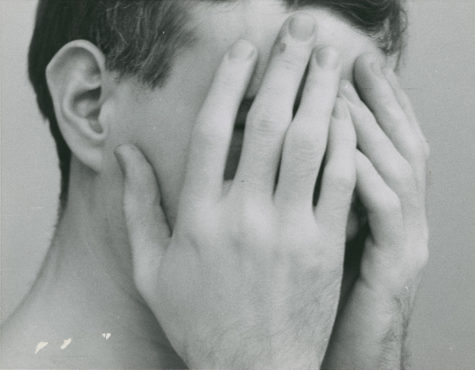Press Release Andy Warhol: My Perfect Body

Edward Wallowitch, Andy Warhol with Face in Hands, 1957–58, The Andy Warhol Museum, Pittsburgh, Contribution The Andy Warhol Foundation for the Visual Arts, Inc., © Estate of Edward Wallowitch. All rights reserved.
For immediate release
Tuesday, June 28, 2016
The Andy Warhol Museum announces Andy Warhol: My Perfect Body, opening October 21, 2016. The exhibition is the first comprehensive look at Andy Warhol’s engagement with the body, highlighting The Warhol’s permanent collection and including rarely traveled loans from the collections of major American museums. The Warhol’s Associate Curator of Art Jessica Beck curated the exhibition.
Andy Warhol: My Perfect Body reveals the parallels between Warhol’s personal history, including his struggles with his own physical appearance—such as early signs of balding in the 1950s to scars following his 1968 shooting—and the treatment of the body as a subject in his work, from student drawings of the 1940s to late paintings of the 1980s.
“This exhibition reveals how the body in Warhol’s work becomes a subject for trauma, torment, shame, desire, transformation, and manipulation,” says Beck. “It is meant to establish a different narrative and introduce a new approach to understanding Warhol’s practice, tracing how his personal afflictions manifested in the work and, more broadly, how this torment fueled his working method. The exhibition asserts that Warhol’s engagement with Pop started with the body.”
More than 200 artworks, including paintings, drawings, photographs, films, source material, and archival objects explore exhibition themes: the tormented body, the body abstracted, the interior and exterior, and the sculpted body. Many of the works on view were never shown during Warhol’s lifetime.
In 1961 Warhol used advertisements as source material to create a series of hand-painted works focused on physical flaws and the means to correct them. One of the earliest examples of this theme is Before and After (1961–62), a painting of a facial plastic surgery ad that Warhol painted in four versions with varying styles; two of the versions from this series are on view.
Following this early period, trauma emerges in the Disaster (1963–64) paintings, abstraction and a metaphysical trace of the body exist in the Oxidations (1978) and Rorschachs (1984), and transformation and humanity are explored in The Last Supper (1986), in black light, where Christ and a bodybuilder are aligned side by side.
Many of the artworks on view display the body in pieces, cropping it to show only sections at a time—torsos, feet, hands—which can be seen in such works as the film Sleep (1963), 1950s Boy Book drawings, and Torsos Posterior View (1977). The 1960s medical diagrams and advertisements promising physical perfection surface again in the 1980s when Warhol returned to the theme with drawings of corsets, dentures, and cosmetic surgery, as well as physiological diagrams where the interior of the body is put on display. Warhol famously said in a 1966 interview, “Pop is just taking the outside and putting it on the inside or taking the inside and putting it on the outside.”
An illustrated exhibition catalogue accompanies the exhibition. The catalogue includes essays by Jessica Beck, James Boaden, John Giorno, and an interview with Douglas Crimp.
Exhibition-related public programs, including figure-drawing activities for families and adults, lectures, and a book signing, will be announced at a later date.
The Warhol receives state arts funding support through a grant from the Pennsylvania Council on the Arts, a state agency funded by the Commonwealth of Pennsylvania; the National Endowment for the Arts, a federal agency; and The Heinz Endowments. Further support is provided by the Allegheny Regional Asset District.
The Andy Warhol Museum
Located in Pittsburgh, Pennsylvania, the place of Andy Warhol’s birth, The Andy Warhol Museum holds the largest collection of Warhol’s artworks and archival materials and is one of the most comprehensive single-artist museums in the world. The Warhol is one of the four Carnegie Museums of Pittsburgh.
Carnegie Museums of Pittsburgh
Established in 1895 by Andrew Carnegie, Carnegie Museums of Pittsburgh is a collection of four distinctive museums: Carnegie Museum of Art, Carnegie Museum of Natural History, Carnegie Science Center, and The Andy Warhol Museum. The museums reach more than 1.4 million people a year through exhibitions, educational programs, outreach activities, and special events.